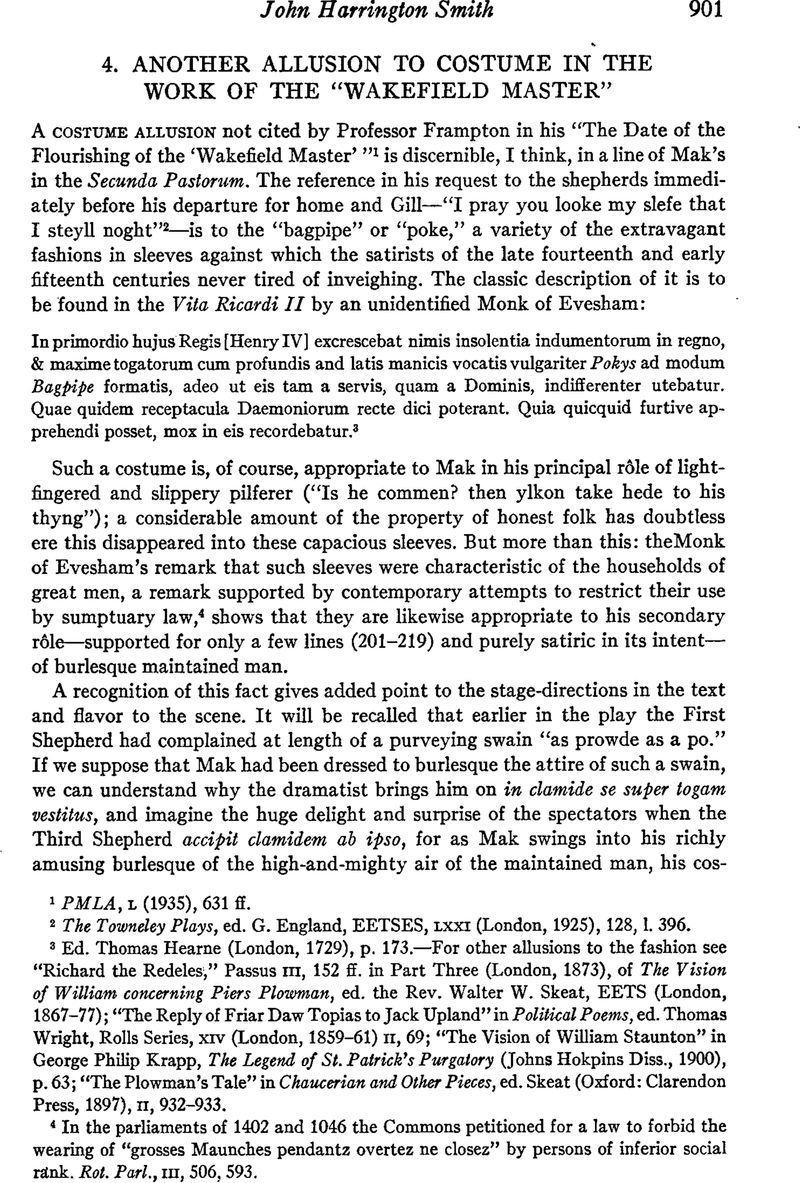No CrossRef data available.
Article contents
Another Allusion to Costume in the Work of the “Wakefield Master”
Published online by Cambridge University Press: 02 December 2020
Abstract

- Type
- Comment and Criticism
- Information
- Copyright
- Copyright © Modern Language Association of America, 1937
References
1 PMLA, l (1935), 631 ff.
2 The Towneley Plays, ed. G. England, EETSES, lxxi (London, 1925), 128, 1. 396.
3 Ed. Thomas Hearne (London, 1729), p. 173.—For other allusions to the fashion see “Richard the Redeles,” Passus iii, 152 ff. in Part Three (London, 1873), of The Vision of William concerning Piers Plowman, ed. the Rev. Walter W. Skeat, EETS (London, 1867–77); “The Reply of Friar Daw Topias to Jack Upland” in Political Poems, ed. Thomas Wright, Rolls Series, xiv (London, 1859–61) ii, 69; “The Vision of William Staunton” in George Philip Krapp, The Legend of St. Patrick's Purgatory (Johns Hokpins Diss., 1900), p. 63; “The Plowman's Tale” in Chaucerian and Other Pieces, ed. Skeat (Oxford: Clarendon Press, 1897), ii, 932–933.
4 In the parliaments of 1402 and 1046 the Commons petitioned for a law to forbid the wearing of “grosses Maunches pendantz overtez ne closez” by persons of inferior social rank. Rot. Parl., iii, 506, 593.




